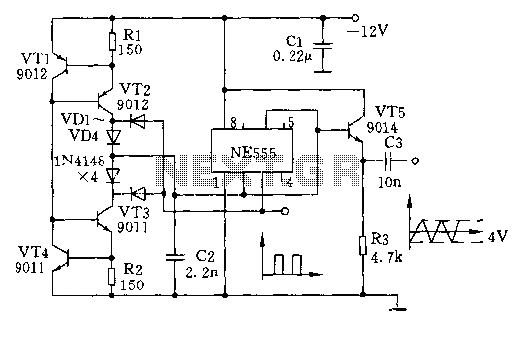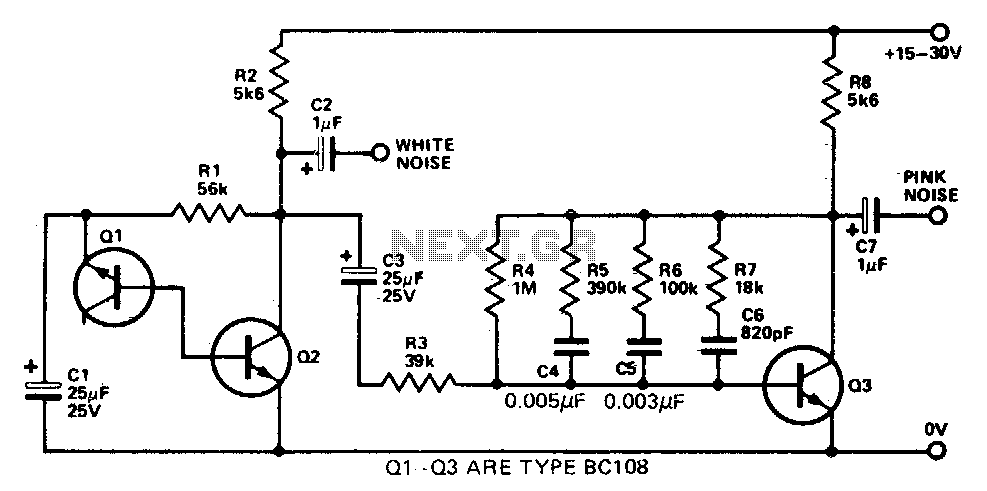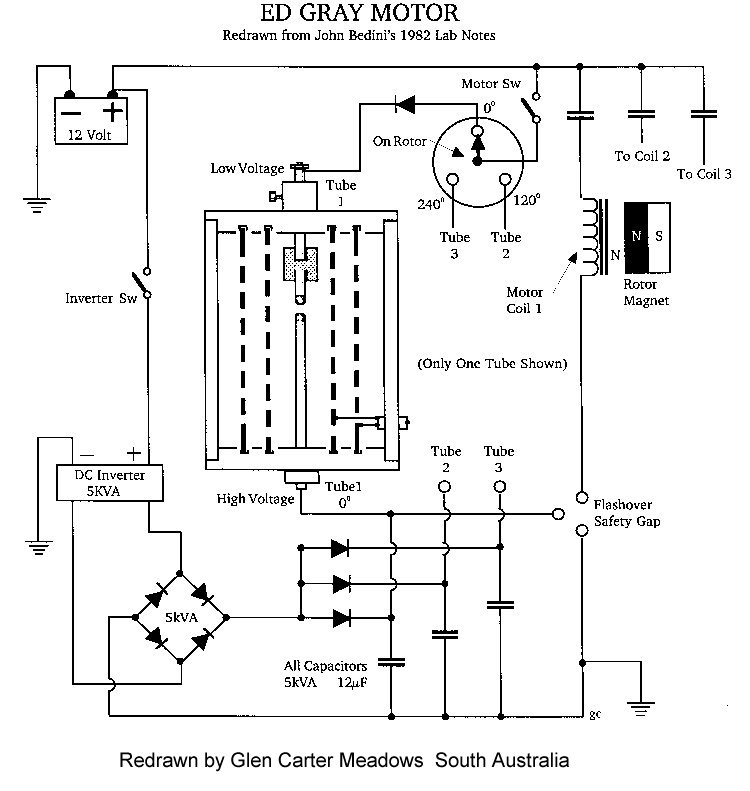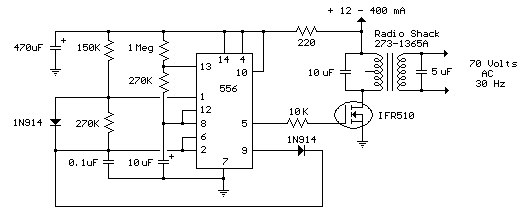
Wideband noise generator
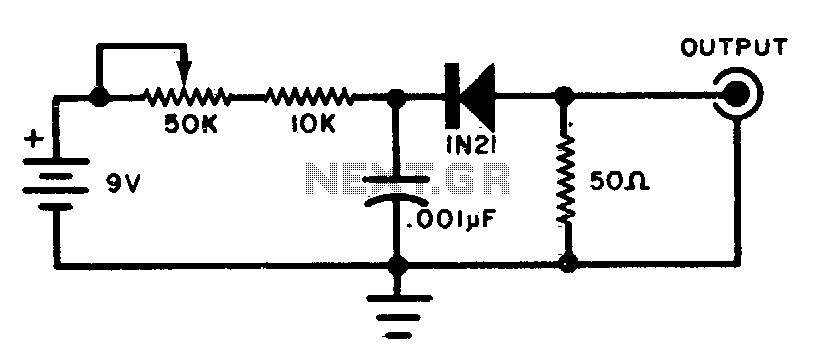
This circuit generates wideband RF noise utilizing a reverse-biased diode, featuring a low-impedance output. It can be employed to align receivers for optimal performance.
The circuit primarily consists of a reverse-biased diode, which serves as the core component for generating RF noise. When reverse-biased, the diode operates in a breakdown region, producing noise across a wide frequency range. This characteristic is essential for applications requiring random noise signals, such as in the alignment of radio receivers.
The low-impedance output is crucial for interfacing with other circuit components, ensuring that the generated noise can be effectively coupled to the receiver circuitry without significant signal loss. This configuration allows for better matching with the input stages of receivers, which often have low input impedance.
In practical applications, the circuit can be integrated into a test setup where it can provide the necessary noise signal for tuning and optimizing the performance of various RF receivers. The wideband nature of the noise produced ensures that it can cover the entire frequency spectrum of interest, making it suitable for a range of RF applications, from AM to FM and beyond.
Additional components may be included in the circuit design, such as resistors and capacitors, to filter and shape the noise signal as required for specific applications. Proper PCB layout and component selection will also enhance performance, ensuring minimal interference and optimal signal integrity during operation.This circuit will produce wideband rf noise. It uses a reverse-biased diode and has a low-impedance output Can be used to align receivers for optimum performance. 🔗 External reference
The circuit primarily consists of a reverse-biased diode, which serves as the core component for generating RF noise. When reverse-biased, the diode operates in a breakdown region, producing noise across a wide frequency range. This characteristic is essential for applications requiring random noise signals, such as in the alignment of radio receivers.
The low-impedance output is crucial for interfacing with other circuit components, ensuring that the generated noise can be effectively coupled to the receiver circuitry without significant signal loss. This configuration allows for better matching with the input stages of receivers, which often have low input impedance.
In practical applications, the circuit can be integrated into a test setup where it can provide the necessary noise signal for tuning and optimizing the performance of various RF receivers. The wideband nature of the noise produced ensures that it can cover the entire frequency spectrum of interest, making it suitable for a range of RF applications, from AM to FM and beyond.
Additional components may be included in the circuit design, such as resistors and capacitors, to filter and shape the noise signal as required for specific applications. Proper PCB layout and component selection will also enhance performance, ensuring minimal interference and optimal signal integrity during operation.This circuit will produce wideband rf noise. It uses a reverse-biased diode and has a low-impedance output Can be used to align receivers for optimum performance. 🔗 External reference
Warning: include(partials/cookie-banner.php): Failed to open stream: Permission denied in /var/www/html/nextgr/view-circuit.php on line 713
Warning: include(): Failed opening 'partials/cookie-banner.php' for inclusion (include_path='.:/usr/share/php') in /var/www/html/nextgr/view-circuit.php on line 713
